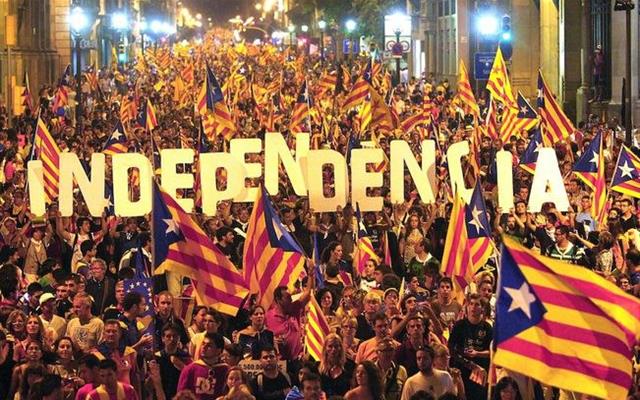EDITORIAL/1
With the renewal of the Generalitat, pro-independence factions grew stronger. But voters are divided. Controversies between Madrid and the EU

Prompted by the separatist challenge, Catalans went massively to the polls for a vote, that of Sunday September 27, initially meant as political (the election of the Generalitat de Catalunya, the institutional system that includes parliament and government of the autonomous community, with headquarters in Barcelona) was turned into a kind of referendum on the permanence of Catalonia in the Spanish State. The results hit the news throughout Europe. Indeed, the challenge of secessionism is widespread and it is part and parcel of “European diversity”, characterising social and political realms from Spain to Ukraine, from Italy to Scotland, uniting the four cardinal points with a red line. Secessionist forces, headed by the current president of the Generalitat, Artur Mas, conquered a majority vote in the local parliament, with 72 seats out of 153: 62 of which to Mas’ Junts pel sì (United for Yes), 10 to CUP allies the candidates of Unitat popular. Other seats were allocated to Ciutadans (Party of Citizens, 25 seats), the Socialist Party (16), Catalunya yes que es pot (“Catalonia yes, you can” in favour of greater regional autonomy, 11), the People’s Party (Mariano Rajoy’s government party 11). But secessionists failed to achieve the majority of popular vote: Junts pel sì and CUP representatives chair the institutions of Barcelona but they must recognize that the citizens of Catalonia are divided into two: a little less than half claim independence, while slightly more than half of them are content with the present wide regional autonomy. A long, incandescent political phase lies ahead, during which Mas and his allies will strive to drag the region outside the Spanish State and from Crown sovereignty – within 18 months, he promised the voters. But the Catalan question cannot be solved with party opposition and street slogans, nor can it be underestimated in terms of identity or politics: the region has its own history – within the larger history of Spain – its own language, a flag, the presence of cities – the provincial capital and other cities like Girona, Lleida and Tarragona – capable of expressing their own territorial pride. Nor can it be ignored that Catalonia has its own economy, which is even slightly more florid than the national one, and a football club (the Futbol Club Barcelona), which in recent years has become a Catalan emblem renowned worldwide. Plausible reasons for the spread of secessionist claims in recent years, expressed also with crowded street rallies, aren’t hard to find. However, the primary cause appears to be also the most concrete and urgent one. In fact, at a time of economic crisis, it should be said that while Spain plunged into deep unemployment Catalonia better withstood the blow, coupled by growing dissatisfaction for excessive taxation. So what should be expected from the developments of the vote of September 27? It is possible to imagine a set of confrontations within and beyond the “borders” of Catalonia. The first within separatist parties, since Mas and his Junts pel represent the political centre-wing, while CUP is an extreme-left formation. The second political debate should take place inside the regional parliament, where 72 forerunners of the tear with Madrid will be called to confront 63 regional representatives who oppose this option. Another debate could involve the manufacturing, financial and unionist sectors of Catalonia, since separation from Spain would entail exit from the euro currency and from the European single market. Obviously, yet another debate, perhaps harsher and more complex will take place – and could escalate – between the central and the regional government, between 7 million Catalans and other 40 million Spaniards. Last but not least, a tug of war could break out between Catalonia and the European Union. Brussels, which is already striving to keep the impoverished Greece and the restless United Kingdom inside the “common home”, cannot afford another rupture. Moreover, the Treaties make it clear: if a region breaks the national unity of a Member Country it also exits the EU, freeing itself from Community duties and renouncing the benefits that ensue, from copious structural funds, common market advantages (import-export), to the “convenience”- for internal trade – of the single currency. Given this situation, Catalonia’s next steps are greatly anticipated. Will it be a democratic, peaceful political process, or will someone try to exacerbate popular dissent and force the situation with violence? This is an legitimate question, given the fact that in Spain (Basque countries) and in Europe (Ireland) secessionisms have made far too many victims in the past.